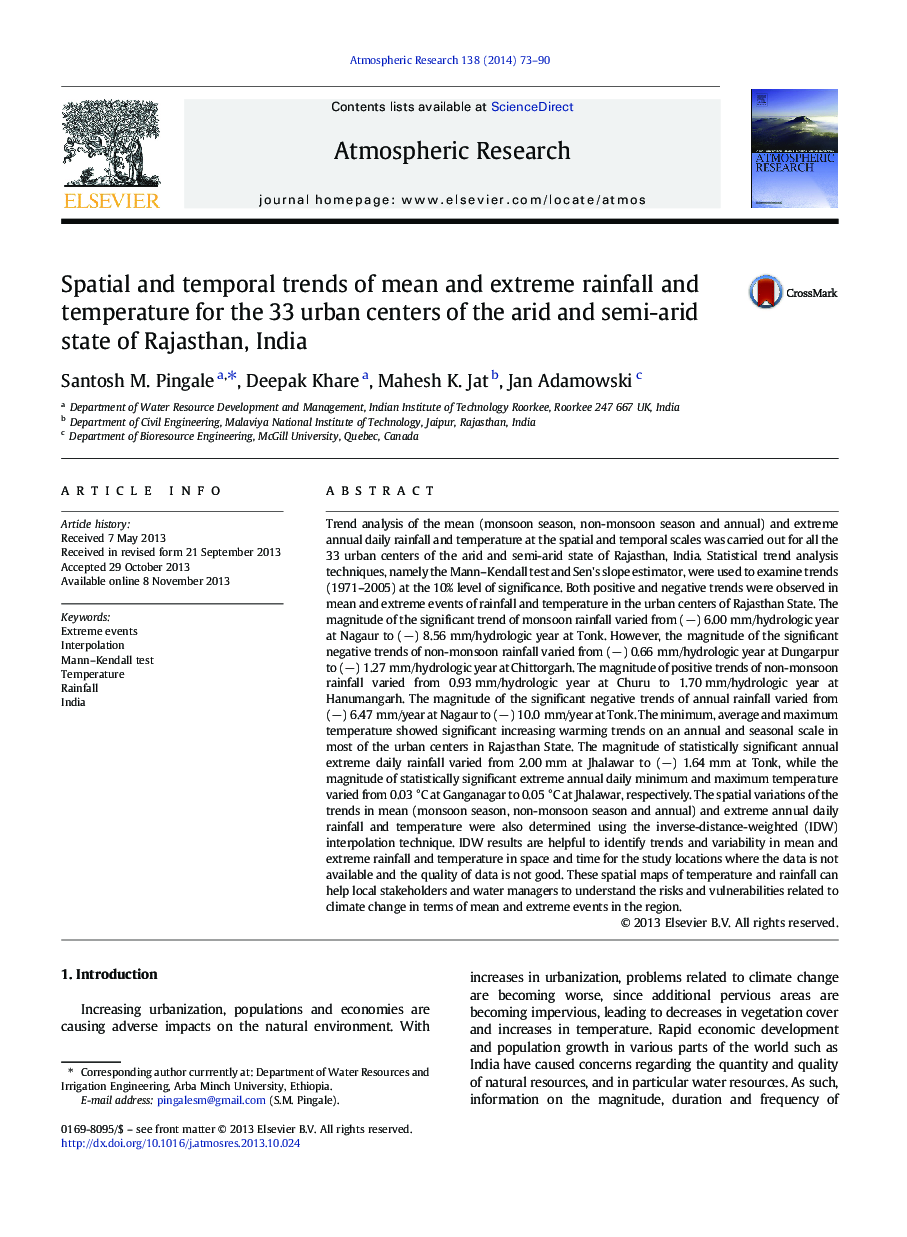| Article ID | Journal | Published Year | Pages | File Type |
|---|---|---|---|---|
| 6343624 | Atmospheric Research | 2014 | 18 Pages |
Abstract
Trend analysis of the mean (monsoon season, non-monsoon season and annual) and extreme annual daily rainfall and temperature at the spatial and temporal scales was carried out for all the 33 urban centers of the arid and semi-arid state of Rajasthan, India. Statistical trend analysis techniques, namely the Mann-Kendall test and Sen's slope estimator, were used to examine trends (1971-2005) at the 10% level of significance. Both positive and negative trends were observed in mean and extreme events of rainfall and temperature in the urban centers of Rajasthan State. The magnitude of the significant trend of monsoon rainfall varied from (â) 6.00 mm/hydrologic year at Nagaur to (â) 8.56 mm/hydrologic year at Tonk. However, the magnitude of the significant negative trends of non-monsoon rainfall varied from (â) 0.66 mm/hydrologic year at Dungarpur to (â) 1.27 mm/hydrologic year at Chittorgarh. The magnitude of positive trends of non-monsoon rainfall varied from 0.93 mm/hydrologic year at Churu to 1.70 mm/hydrologic year at Hanumangarh. The magnitude of the significant negative trends of annual rainfall varied from (â) 6.47 mm/year at Nagaur to (â) 10.0 mm/year at Tonk. The minimum, average and maximum temperature showed significant increasing warming trends on an annual and seasonal scale in most of the urban centers in Rajasthan State. The magnitude of statistically significant annual extreme daily rainfall varied from 2.00 mm at Jhalawar to (â) 1.64 mm at Tonk, while the magnitude of statistically significant extreme annual daily minimum and maximum temperature varied from 0.03 °C at Ganganagar to 0.05 °C at Jhalawar, respectively. The spatial variations of the trends in mean (monsoon season, non-monsoon season and annual) and extreme annual daily rainfall and temperature were also determined using the inverse-distance-weighted (IDW) interpolation technique. IDW results are helpful to identify trends and variability in mean and extreme rainfall and temperature in space and time for the study locations where the data is not available and the quality of data is not good. These spatial maps of temperature and rainfall can help local stakeholders and water managers to understand the risks and vulnerabilities related to climate change in terms of mean and extreme events in the region.
Related Topics
Physical Sciences and Engineering
Earth and Planetary Sciences
Atmospheric Science
Authors
Santosh M. Pingale, Deepak Khare, Mahesh K. Jat, Jan Adamowski,
